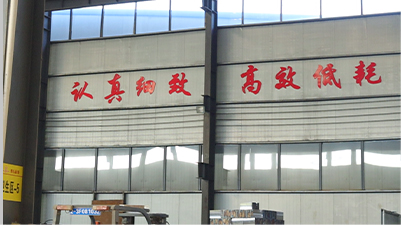magnetic lifting hook
Magnetic Lifting Hooks Revolutionizing Load Handling in Industry
In the realm of heavy machinery and industrial operations, efficiency and safety are paramount. With the increasing demand for streamlined processes, magnetic lifting hooks have emerged as a transformative solution in material handling. These devices leverage the power of magnetism to facilitate the lifting and moving of heavy loads, offering several advantages over traditional lifting methods.
What are Magnetic Lifting Hooks?
Magnetic lifting hooks are specialized tools designed to lift ferrous materials using magnetic forces. These hooks are typically equipped with powerful electromagnets or permanent magnets, allowing them to securely hold and lift metal objects in various shapes and sizes. Commonly used in manufacturing, shipping, and construction industries, these hooks simplify the lifting process, making it faster and more efficient.
How Do They Work?
The operation of magnetic lifting hooks is relatively straightforward. When activated, the electromagnet generates a magnetic field that attracts ferrous materials, creating a strong bond between the hook and the load. This magnetic grip is often adjustable, allowing operators to manage the amount of lift based on the weight and type of the material being handled. The ability to control the magnetic force gives operators the flexibility to lift not only flat steel sheets but also irregularly shaped components seamlessly.
Advantages of Using Magnetic Lifting Hooks
1. Increased Efficiency Traditional lifting methods often involve chains, slings, and hoists, which can be time-consuming and cumbersome. In contrast, magnetic lifting hooks can quickly engage with the load, reducing the time spent on setup and allowing for quicker cycle times in operations.
magnetic lifting hook

2. Enhanced Safety Safety is a critical concern in material handling environments. Magnetic lifting hooks provide a more secure grip on loads, minimizing the risk of slippage or accidental drops. Additionally, many models are equipped with safety features, such as automatic shutoff systems, to prevent misuse and ensure the safety of operators and bystanders.
3. Versatility These hooks are not limited to a specific type of load, making them suitable for various applications. Whether lifting sheets of steel, machinery parts, or scrap metal, magnetic lifting hooks can adapt to different circumstances, making them invaluable in diverse industrial settings.
4. Reduced Physical Strain By mechanizing the lifting process, magnetic lifting hooks alleviate the physical strain on workers. This reduction in manual labor can lead to lower injury rates and enhance overall workplace productivity.
5. Cost-Effectiveness The initial investment in magnetic lifting technology can often be offset by the long-term savings from increased productivity and reduced labor costs. Moreover, the durability of these devices means they can operate effectively over extended periods with minimal maintenance.
Challenges and Considerations
While magnetic lifting hooks present numerous advantages, there are also considerations that operators should keep in mind. For instance, these hooks are primarily effective with ferrous materials and may not function with non-magnetic materials. Furthermore, proper training is essential for operators to understand the capabilities and limitations of magnetic lifting technology to ensure safe and effective use.
Conclusion
Magnetic lifting hooks represent a significant advancement in the world of material handling, offering substantial benefits in efficiency, safety, and versatility. As industries continue to evolve and demands for faster, safer solutions grow, the adoption of magnetic lifting technology is likely to rise. By integrating these innovative tools into their operations, companies can optimize their processes, reduce risks, and ultimately drive productivity in an increasingly competitive landscape. The future of industrial lifting may very well be magnetic, proving that sometimes, the simplest solutions are the most powerful.
-
Unlock Seamless Relocation with Our Heavy Equipment Moving ExpertiseNewsJun.06,2025
-
Unleash Unrivaled Flexibility with Our Adjustable Gantry CraneNewsJun.06,2025
-
Unleash Heavy-Duty Efficiency with Our Industrial Gantry Crane SolutionsNewsJun.06,2025
-
Revolutionize Steel Handling with Our Magnetic Lifter RangeNewsJun.06,2025
-
Master Equipment Mobility with Premium Machinery Mover SolutionsNewsJun.06,2025
-
Elevate Your Material Handling with Magnetic Lifter TechnologyNewsJun.06,2025
-
YS Permanent Lifting Magnets: The Smarter Way to Handle SteelNewsMay.22,2025
